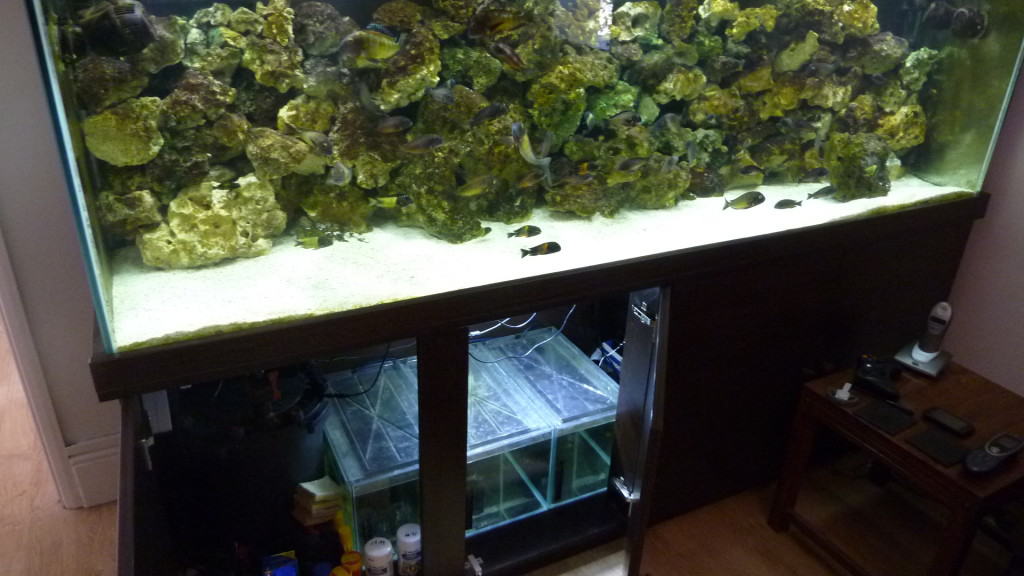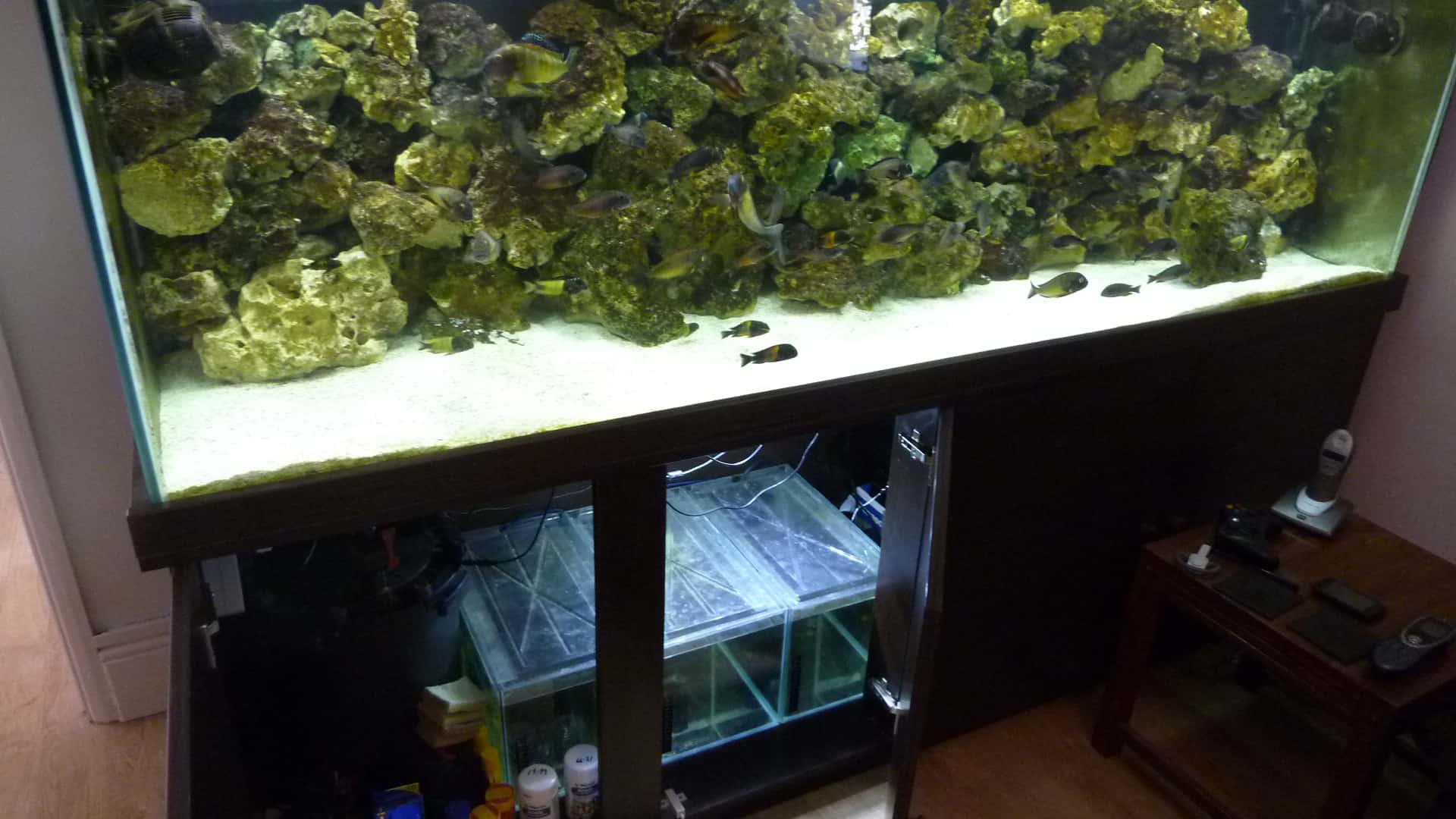Whilst we are all trying our best to keep tropical fish in the best environment and surroundings as possible, it is often necessary to isolate our tropical fish from the main tank due to disease or stress. It is also advisable when buying new fish that you isolate them from the main tank and keep them in quarantine for a few weeks before introducing them to the main tank. It is not essential to have such a tank however it is advisable as an insurance for the unknown. We have discussed the reasons why you should do this in more depth in our article about why you should have a hospital fish tank. So how do you set up a hospital fish tank aquarium?

The first thing to consider is how large you want this tank to be. My advise would be to keep it relatively small and no larger than it needs to be for the type of fish you need. Personally, keeping rift valley cichlids I thought a hospital tank should be no larger than 18″x10″x10″ (28 litres), this is big enough to house a single cichlid at a time of crisis. There are tanks for this size and many other available in the Clearseal range of fish tanks which come as bare tanks at a very reasonable price so this is the clear choice for something which is likely to be hidden away and have no thrills.

The next thing to consider is the equipment you are going to use for running such a tank, filtration is best covered using the cheapest type of filter around however this is one of the best types around – Biochemical Sponge Filter. These can be picked up for under £5 each and can be run using a standard air pump, for my set up I opted for individual Tetratec APS 50 air pumps. You could however, if setting up more than one hospital tank, use a multiple outlet air pump to run several filters. The main advantage of running a biochemical sponge filter is that as well as filtering the water the filter will output bubbles which will help to provide surface agitation – 2 jobs in 1 which is what we like!

To heat the hospital tank a small 50W standard thermostat controlled heater could be used, or whichever wattage of heater might be required for the size of aquarium you will be using. We have put together a quick guide to recommended aquarium heater size to help you decide the right wattage of heater for your tank.
When it comes to lighting your hospital tank it is not essential to do so and fish are more likely to recover in darkness than in bright light so I would recommend not using lighting and if you must then only use a dim light. Modern LED lights give you the option to dim them so these could be a good option if you want to go down that route.

The last thing you might want to add is a condensation cover to ensure water doesn’t escape through it evaporating. Once this is added, your hospital tank is now set up. I would not advise adding any gravel or aquascape such as rock or plants to this tank as that could affect any treatment you might use in this tank.
For the water I would advise filling with water from your main tank although only do this when you are sure no disease is present in the main tank and parameters are correct and stable otherwise you may simply transfer any disease from the main tank to the hospital tank. This will also help with ensuring the biochemical sponge filter colonises with beneficial bacteria quickly and works effectively.

Now this is set up you are ready for any emergencies you might have with your fish and perform any treatments on individual fish the most cost effective and efficient way.


Related Posts
A Deeper Look In To Loach Fish Species
How Much Salt Should I Add To My Freshwater Aquarium
Everything You Need To Know About Using T5 Lights For Your Aquarium